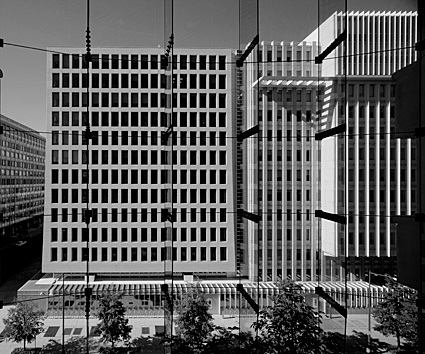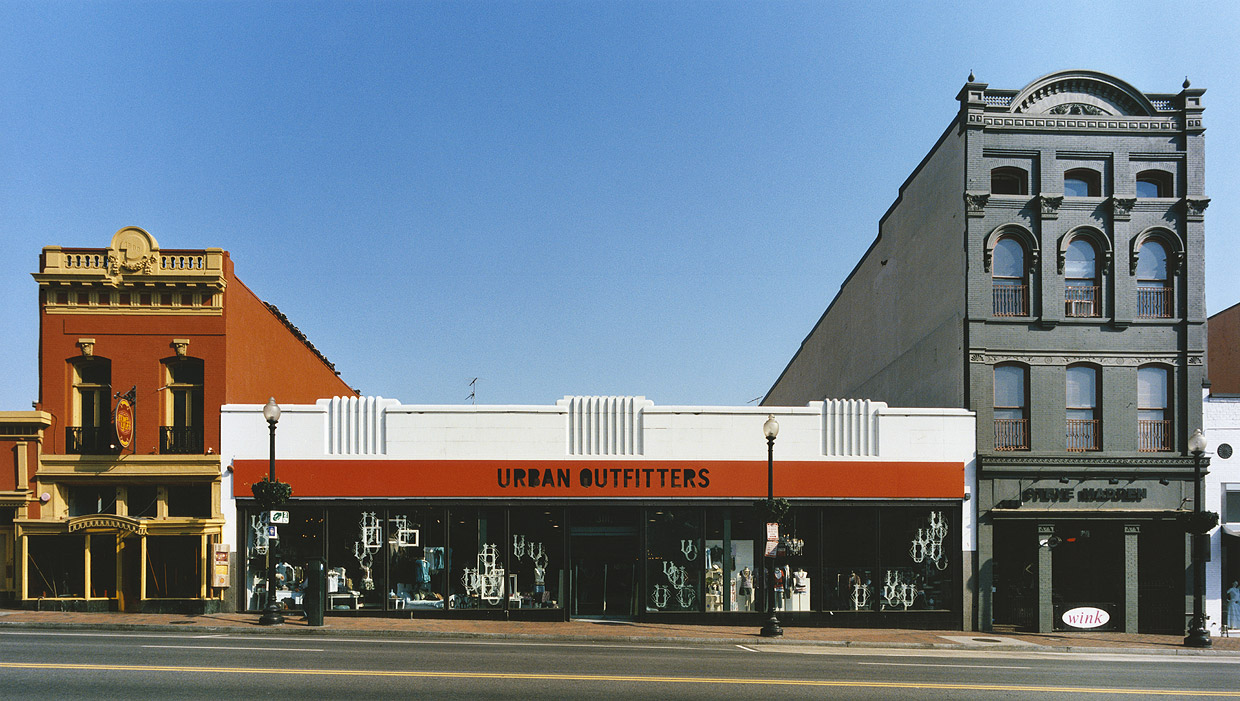Digital Services
Film remains a viable medium for architectural photography requiring perspective control of very wide views. Digital camera systems are not yet fully optimized for such coverage involving extreme lens movements, while limited sensor resolution may restrict the size of enlargements.
In most professional film photography, however, digital technology takes over after film negatives or transparencies are developed. Images are typically subjected to high-density scans, following which digital processing and printing—the fine arts of the digital darkroom—are applied. Finally, redundant digital storage is utilized.
For the creation of mural images of 100-200 sq ft, the benefits of high-resolution large-format films are optimized through digital scanning on an order of 200MB followed by custom processing and printing on wall-sized panels.

Office building photographed from glass-enclosed portico across the street. This large-format image was required in a hurry but could not have been photographed with a digital camera because of its extreme wide view requiring lens shift. Instead the photograph was made with a view camera using Polaroid film; the image was then subjected to a high-density digital scan which effectively serves as the negative.
A Broad View for Architectural Context
The Urban Outfitters retail store on M Street in Georgetown in Washington DC requires an image wider than normal vision to wholly illustrate its setting. A passer-by, for example, could not take in the entire view, and would not normally be aware of the slight incline of the street that shows prominently in the photograph.


